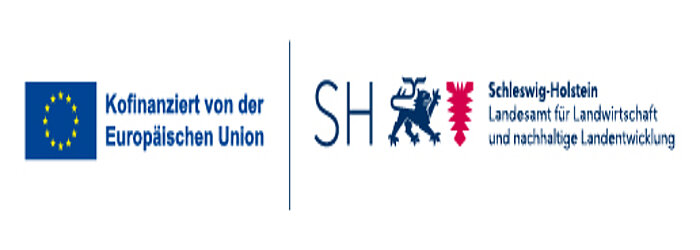Arbeitsgruppe Biodiversität
Überblick
Die Arbeitsgruppe beschäftigt sich mit den Mechanismen, die die Biodiversität eines Ökosystems regulieren, sowie mit der Bedeutung von Biodiversität für Ökosystemleistungen. Ein Schwerpunkt liegt in der Erforschung möglicher Auswirkungen des Klimawandels auf die Interaktion (Konkurrenz und Konsum) zusammenlebender Arten und Genotypen und den daraus (möglicherweise) resultierenden Konsequenzen für bestehende Ökosystemleistungen. Als experimentelle Modellsysteme nutzen wir Phytoplankton und benthische Makro- und Mikroalgen mit ihren assoziierten Konsumenten und Bakterien. Mit Hilfe von trait-basierten Ansätzen untersuchen wir in nahezu natürlichen Gemeinschaften und/ oder über längere Zeiträume welche direkten und indirekten Mechanismen des Klimawandels Einfluss auf die ökologischen Gemeinschaften nehmen. Ziel ist es, durch genauere Kenntnis der Wirkungsmechanismen die Folgen des Klimawandels für Meeresökosysteme realistisch einschätzen zu können. Letzteres beinhaltet auch die Einschätzung der Widerstandskraft von Ökosystemen.
Ehemalige
- Julia Romberg
- Franziska Julie Werner
- Giannina Hattich
- Friederike Engel
- Dorthe Ozod-Seradj
- Lena Eggers
- Sebastian Krug
- Leona Schulze
- Helen Moor
- Erik Mielke
Projekte

- Nachhaltiges und vollwertiges Mikroalgenprodukt aus verschiedenen Phytoplanktonarten zur Anwendung in der Aquakultur (PhytoComplement), Gefördert durch die Europäische Union (EMFAF) und das Land Schleswig-Holstein. In Kollaboration mit Stefanie Moorthi (Universität Oldenburg) und Leona Ritter von Stein (HanseGarnelen AG).
- Shifts in bacteria-algae symbiotic interactions - effects on plankton community dynamics and properties (in DFG Research Group FOR 5726 DynaSym, 2024-2028). In collaboration with Cathleen Schlundt and Jorin Hamer.
- Spatial algae - resource dynamics (DFG Research Group DynaCom, 2022-2025). In collaboration with Stefanie Moorthi, Bert Engelen and Mike Jan Smykala.
- Nutrient uptake-related trait variability and trade-offs - adaptive evolution and community functioning in competing phytoplankton species (within DFG Priority Program 1704 Dynatrait, 2018-2022). In collaboration with Thorsten Reusch, Giannina Hattich.
- Eco-evolutionary coupling in competing marine phytoplankton communities (within DFG Priority Program 1704 Dynatrait, 2015-2018). In collaboration with Thorsten Reusch, Giannina Hattich and Luisa Listmann.
- BIOACID III, Theme 2: Shifts in benthic ecosystems and their services. WP2,2 Quantifying the relative importance of direct and indirect effects of increasing CO2 and temperature on the functioning of benthic and pelagic primary producers. In collaboration with Franziska Werner and Helmut Hillebrand.
- BOACID II: Responses of benthic assemblages to interactive stress. WP 2.3 Re-structuring and re-functioning of microphyte-dominated biofilms on macrophytes. Funded by BMBF. In collaboration with Martin Wahl, Franziska Werner.
- The relation between biodiversity and resilience in source-sink metacommunities. Funded by NWO. In collaboration with Klemens Eriksson, Universität Groningen, Niederlande.
Veröffentlichungen
- Matthiessen B, Hattich GSI, Pulina S, Hansen T, Reusch TBH, Hamer, J (2024) Phytoplankton mean cell size and total biomass increase with nutrients are driven by both species composition and evolution of plasticity. Oikos; early online; http://doi.org/10.1111/oik.10910.
- Makareviciute-Fichtner K, Matthiessen B, Lotze H K, Sommer U (2024) Nutrient enrichment alters phytoplankton biomass and composition via silicon limitation. Front. Mar. Sci. 11:1289768; doi: 10.3389/fmars.2024.1289768
- Hattich GSI, Listmann L, Havenhand J, Reusch TBH, Matthiessen B (2023) Temporal variation in ecological and evolutionary contributions to phytoplankton functional shifts. Limnology and Oceanography; 2, 297-306; http://doi.org/10.1002/lno.12267
- Hamer J, Matthiessen B, Pulina S, Hattich GSI (2022) Maintenance of Intraspecific Diversity in Response to Species Competition and Nutrient Fluctuations. Microorganisms, 10(1):113. https://doi.org/10.3390/microorganisms10010113
- Charalampous E, Matthiessen B, Sommer U (2021) Grazing induced shifts in phytoplankton cell size explain the community response to nutrient supply. Microorganisms, 9, 2440. https://doi.org/10.3390/microorganisms9122440
- Paul C, Sommer U, Matthiessen B (2021) Composition and dominance of edible and inedible phytoplankton predict responses of Baltic Sea summer communities to elevated temperature and CO2. Microorganisms; 9(11):2294; https://doi.org/10.3390/microorganisms9112294
- Hattich GSI, Listmann L, Govaert L, Pansch C, Reusch TBH, Matthiessen B (2021) Experimentally decomposing phytoplankton community change into ecological and evolutionary contributions. Functional Ecology; 36, 120-132; https://doi.org/10.1111/1365-2435.13923
- Makareviciute-Fichtner K, Matthiessen B, Lotze H K & Sommer U (2021) Phytoplankton nutritional quality is altered by shifting Si:N ratios and selective grazing. Journal of Plankton Research; 43, 325-337; https://doi.org/10.1093/plankt/fbab034
- Engel F G, Dini-Andreote F, Eriksson B K, Falcao Salles F, De Lima Brossi M J, Matthiessen B (2020) Dispersal mitigates bacterial dominance over microalgal competitor in metacommunities. Oecologia; https://doi.org/10.1007/s00442-020-04707-8
- Listmann L, Hattich GSI, Matthiessen B, Reusch TBH (2020) Eco-evolutionary interaction in competing phytoplankton: nutrient driven genotype sorting likely explains dominance shift and species responses to CO2. Frontiers in Marine Science 7, 634; doi:10.3389/fmars.2020.00634
- Makareviciute-Fichtner K, Matthiessen B, Lotze H, Sommer U (2020) Decrease in diatom dominance at lower Si:N ratios alters plankton food webs. Journal of Plankton Research; 42 (4), 411-424; https://doi.org/10.1093/plankt/fbaa032
- Engel F G, Matthiessen B, Eriksson B K (2020) A heatwave increases turnover and regional dominance in microbenthic metacommunities. Basic and Applied Ecology; https://doi.org/10.1016/j.baae.2020.03.003
- Wahl M, Werner F J, Buchholz B, Raddatz S, Graiff A , Matthiessen B, Karsten U, Hiebenthal C, Hamer J, Ito M, Gülzow E, Rilov G, Guy-Haim T (2020) Season affects strength and direction of the interactive impacts of ocean warming and biotic stress in a coastal seaweed ecosystem. Limnology and Oceanography. 9999, 2019, 1–21; doi: 10.1002/lno.11350
- Charalampous E, Matthiessen B, Sommer U (2018) Light effects on phytoplankton morphometric traits influence nutrient utilization ability. Journal of Plankton Research; https://doi.org/10.1093/plankt/fby037
- Matthiessen B, Werner F J & Paulsen M (2018). Ecological Organization of the Sea. In: Handbook on Marine Environment Protection. Science, Impacts and Sustainable Management (eds. Salomon, M & Markus, T). Springer International Publishing, pp. 37-66
- Engel F G, Lewandowska A M, Eggers S L, Matthiessen B (2017) Manipulation of Non-random Species Loss in Natural Phytoplankton: Qualitative and Quantitative Evaluation of Different Approaches. Frontiers in Marine Science 4; https://doi.org/10.3389/fmars.2017.00317
- Engel F G, Alegria J, Andriana R, Donadi S, Joao B. Gusmao J B, van Leeuwe M A, Matthiessen B, Eriksson B K (2017) Mussel beds are biological power stations on intertidal flats. Estuarine, Coastal and Shelf Science 191: 21-27; http://doi.org/10.1016/j.ecss.2017.04.003
- Werner F J, Matthiessen B (2017) Warming has stronger direct than indirect effects on benthic microalgae in a seaweed system in spring. Marine Biology 164: 67; doi:10.1007/s00227-017-3109-x
- Hattich G S I, Listmann L, Raab J, Ozod-Seradj D, Reusch T B H, Matthiessen B (2017) Inter- and intra-specific phenotypic plasticity of three phytoplankton species in response to ocean acidification. Biology Letters 13: 20160774. doi: 10.1098/rsbl.2016.0774 (Nature Climate Change | Research Highlight)
- Gruner D, Bracken M, Berger S, Eriksson B K, Gamfeldt L, Matthiessen B, Moorthi S, Sommer U, Hillebrand H (2017) Effects of experimental warming on biodiversity depend on ecosystem type and local species composition. Oikos 126: 8-17; doi: 10.1111/oik.03688
- Werner F J, Graiff A, Matthiessen B (2016) Even moderate nutrient enrichment negatively adds up to global climate change effects on a habitat-forming seaweed system. Limnology and Oceanography; 10.1002/lno.10342
- Paul C, Sommer U, Garzke J, Moustaka-Gouni M, Paul A, Matthiessen B (2016) Effects of increased CO2 concentration on nutrient limited coastal summer plankton depend on temperature. Limnology and Oceanography; doi: 10.1002/lno.10256
- Werner F J, Graiff A, Matthiessen B (2016) Temperature effects on seaweed-sustaining top-down control vary with season. Oecologia 180: 889-901; doi:10.1007/s00442-015-3489-x
- Paul C, Matthiessen B, Sommer U (2015) Warming, but not enhanced CO2 concentration, quantitatively and qualitatively affects phytoplankton biomass. Marine Ecology Progress Series 528: 39-51; doi: 10.3354/meps11264
- de Boer K M, Moor H, Matthiessen B, Hillebrand H and Eriksson B K (2014) Dispersal restricts local biomass but promotes the recovery of metacommunities after temperature stress. Oikos 123: 762-768; doi: 10.1111/j.1600-0706.2013.00927.x
- Lewandowska A M, Boyce D G, Hofmann M, Matthiessen B, Sommer U, Worm B (2014) Effects of sea surface warming on marine plankton. Ecology Letters 17: 614-623; doi: 10.1111/ele.12265
- Eggers S L, Lewandowska A M, Barcelos e Ramos J, Blanco-Ameijeiras S, Gallo F, Matthiessen B (2014) Community composition has greater impact on the functioning of marine phytoplankton communities than ocean acidification. Global Change Biology 20: 713-723; doi: 10.1111/gcb.12421
- Hansen T, Gardeler B, Matthiessen B. (2013) Precise quantitative measurements of total dissolved inorganic carbon from small amounts of seawater using a gas chromatographic system. Biogeosciences 10: 6601–6608; doi:10.5194/bg-10-6601-2013
- Eggers S L, Matthiessen B (2013) Initial dominance in coccolitophore communities affects community structure but does not translate into community functioning. Marine Ecology Progress Series 473: 67–77; doi: 10.3354/meps10064
- Werner F J, Matthiessen B. (2013) Temperature indirectly affects benthic microalgal diversity by altering effects of top-down but not bottom-up control. Oikos 122: 52–63, doi: 10.1111/j.1600-0706.2012.19952.x
- Matthiessen B, Eggers S L, Krug S A (2012) High nitrate to phosphorus regime attenuates negative effects of rising pCO2 on total population carbon accumulation. Biogeosciences 9, 1195–1203, doi:10.5194/bg-9-1195-2012.
- Eggers S L, Eriksson B K, Matthiessen, B (2012) A heat wave and dispersal cause dominance shift and decrease biomass in experimental metacommunities. Oikos, 121 (5): 721-733; DOI: 10.1111/j.1600-0706.2011.19714.x
- Mouquet N, Matthiessen B, Miller T, Gonzalez A (2011) Extinction dept in source-sink metacommunities. PLoS One 6,3 e17567; doi:10.1371/journal.pone.0071567
- Matthiessen B, Reusch T (2010) Marine biodiversity - a vital resource.
In: World Ocean Review, Maribus Verlag - Matthiessen B, Ptacnik R, Hillebrand H (2010) Diversity and community biomass depend on dispersal and disturbance in microalgal communities. Hydrobiologia 653, 1: 65; DOI 10.1007/s10750-010-0349-x
- Matthiessen B, Mielke E, Sommer U (2010) Dispersal decreases diversity in heterogeneous metacommunities by enhancing regional competition. Ecology 91 (7): 2022-2033; doi: 10.1890/09-1395.1
- Hillebrand H, Matthiessen B (2009) Biodiversity in a complex world: Consolidation and progress in functional biodiversity research. Ecology Letters 12: 1-15; doi: 10.1111/j.1461-0248.2009.01388.x
- Hillebrand H, Gamfeldt L, Jonnsson PR, Matthiessen B (2009) Consumer diversity indirectly changes prey nutrient content. Mar Ecol Progr Ser 380: 33-41; doi: 10.3354/meps07937
- Gamfeldt L, Matthiessen B, Jonsson PR, Hillebrand H. Effects of predator and herbivore diversity on ecosystem functioning in rock-pool metacommunities. (in prep)
- Matthiessen B, Gamfeldt L, Jonsson PR, Hillebrand H (2007) Effects of grazer richness and combination on algal biomass in closed and open marine systems. Ecology 88 (1): 178-187; doi: 10.1890/0012-9658
- Matthiessen B, Hillebrand H (2006) Dispersal frequency affects local biomass production by controlling local diversity. Ecology Letters 9: 652-662; doi: 10.1111/j.1461-0248.2006.00916.x
- Matthiessen B, Fock HO (2004) A null model for the analysis of dietary overlap in Macroramphosus spp. at Great Meteor Seamount (subtropical North-east Atlantic). Arch Fish Mar Res 51 (1-3): 294-304
- Matthiessen B, Fock HO, von Westernhagen H (2003) Evidence for two sympatric species of snipefishes Macroramphosus spp. (Syngnathiformes, Centriscidae) on Great Meteor Seamount. Helgol Mar Res 57: 63-72; DOI 10.1007/s10152-002-0133-z
- Fock HO, Matthiessen B, Zidowitz H, von Westernhagen H. (2002) Diet and habitat-dependent resource utilisation by deep-sea fishes at the Great Meteor seamount: niche overlap and support for the sound scattering layer interception hyothesis. Mar Ecol Prog Ser 244: 219-233; doi:10.3354/meps244219







